Slope Engineering: Ensuring Stability and Safety
Time:2024-04-12From:sinorock View:
The slope is the natural or man-made inclination of the earth's surface, referring to all geological bodies on the earth's surface with inclination to the airside of the ground, are the geomorphic landscape widely distributed on the earth's surface, playing an important role in shaping the landscape. While slopes are crucial for the environment and human development, they can also pose risks due to slope failures and landslides. This has led to slope engineering, a multidisciplinary field, that focuses on assessing, managing, and mitigating the risks associated with slopes.Understanding Slopes
Slope is a concept in engineering geology, it is a geomorphological form that refers to all geological bodies on the earth's surface with inclination to the airside of the ground. From the definition of slope, it can be seen that the scale of different slopes in nature is different, there are high and low, and these inclinations can occur naturally through geological processes or be created by human activities such as excavation or construction. The basic forms of slopes can be divided into three types: a) vertical slopes; b) inclined slopes; c) stepped slopes; in addition to those there are compound forms, i.e. irregular slopes.
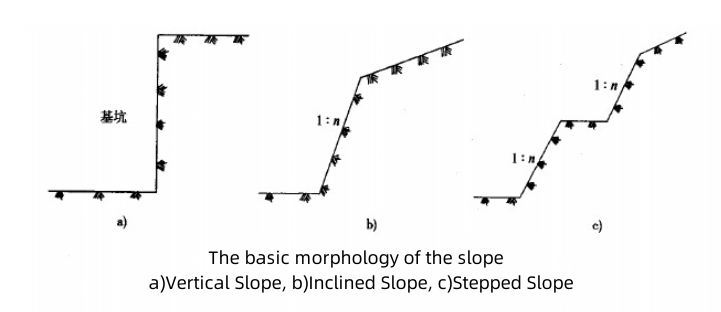
Classification of Slopes
Slopes can be classified into various types according to their different characteristics. They can be classified according to their causes: natural slopes, man-made slopes and engineered slopes. Natural slopes are formed through natural processes such as weathering and erosion, while man-made slopes are created by human activities, such as excavations and embankments. Engineered slopes are constructed slopes that undergo specific design and stabilization measures to ensure stability. According to its degree of stability, it can be divided into: stable slope, basic stable slope, unstable slope and unstable slope. The first three types of slopes are also collectively referred to as potentially unstable slopes. And according to the degree of their service life, they can be divided into: temporary slopes and permanent slopes. The working life of temporary slope is ≤2 years. But the working life of permanent slope is not permanent, but only >2 years. Of course, there are many other types of slope classifications, which will not be introduced here first.
Basic Forms of Slope Failure
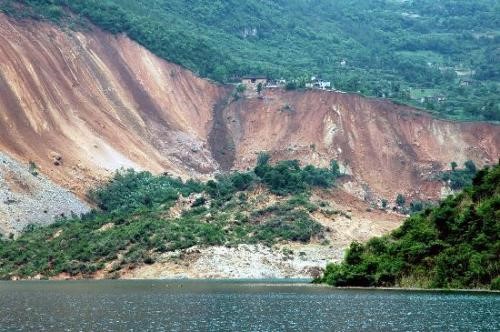
When the force acting on a slope exceeds its strength, slope failure occurs, resulting in loss of stability. The mode of slope damage is determined by the lithology and the distribution and combination of geological fracture surfaces within the rock mass. The most common forms of slope failure include collapse, dumping, landslides and flow.
The slope collapse refers to the spalling of rock on the surface of the slope by weathering and mine blasting vibration, which rolls down the slope and accumulates at the bottom of the slope, piling up into a broken ballast pile at a natural resting angle. This situation is common in the inner steps of the open pit mine; it is especially obvious in the steps within the weathering zone for too long. If it can be cleared in time, it is not a big obstacle for production; otherwise, the safety platform is full of debris residue, and several steps are connected into a diffuse slope, and the rolling rock will endanger the safety of the lower quarry operations.
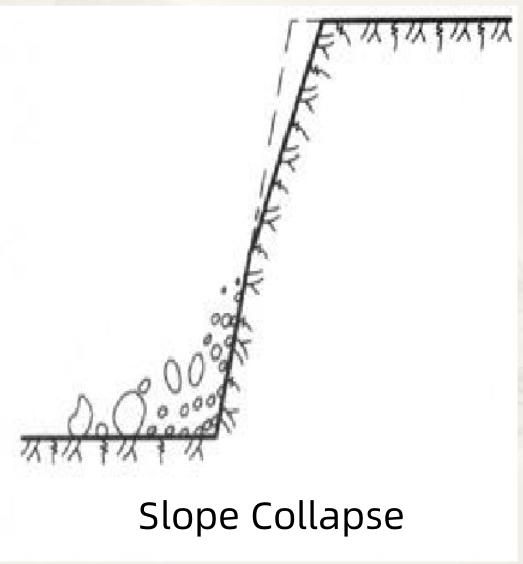
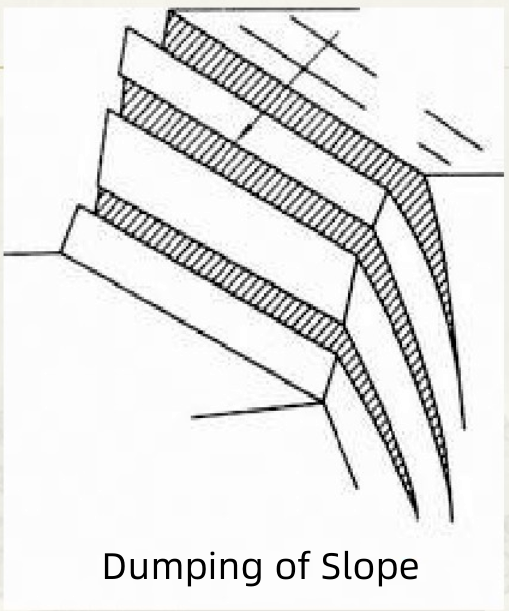
Dumping refers to the damage of the rock body of a steep slope along the discontinuous surface such as joints or the weak surface that occurs in the direction of the slope surface in the form of slab or column dumping. The main reason of the damage is that the rock body generates tipping moment under the action of gravity, and when the tipping moment overcomes the resistance moment, the rock body becomes unstable and topples over. In addition, the steeply inclined joints located at the back side of the potential overturning body often have water and ice wedged into them to generate lateral pressure on the overturning body and promote the occurrence of overturning.
Rotational slides occur when a curved failure surface develops, causing the slope to rotate and move downhill. Translational slides involve the movement of a mass of soil or rock along a relatively planar surface. And the flows involve the movement of saturated or liquefied soil or rock.
Harmful Effects of Landslides and the Need for Slope Maintenance
Landslides caused by slope instability are very serious natural disasters. Landslides can have a devastating impact on human life, property and infrastructure. They can lead to loss of lives, disrupt transportation networks, damage buildings, contaminate water sources, and cause significant economic losses. Some notable examples of landslide disasters include the 2014 Oso landslide in Washington, the 2017 Sierra Leone landslide, and the 2019 northeastern Afghanistan landslide. These disasters highlight the importance of slope maintenance and proactive slope engineering measures to prevent and mitigate landslide risk reduction to safeguard people's lives, property, and ecological health.
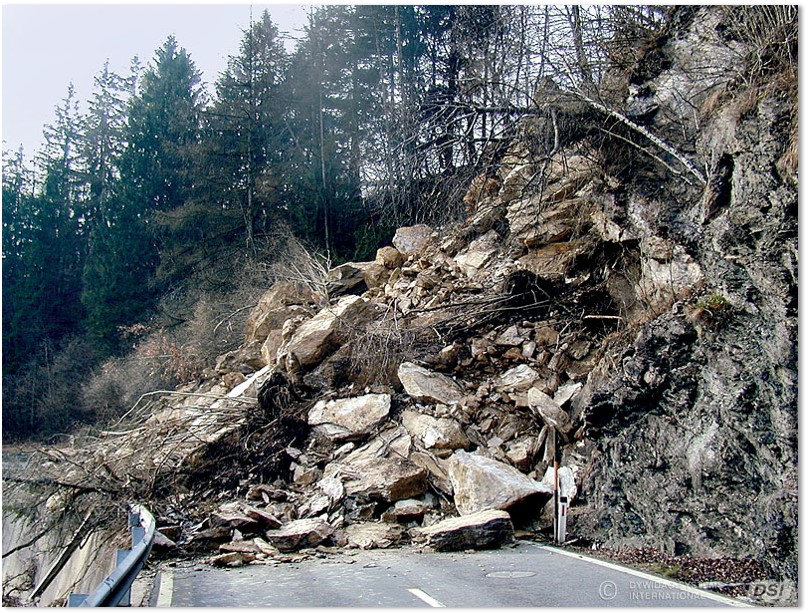
Classification of Slope Engineering
The modification of natural slopes and artificial slopes to meet engineering needs is called slope engineering. According to the time difference of the impact of slope on the project can be divided into: permanent slope and temporary slope. And according to the relationship between slope and engineering, it can be divided into three categories:
a) slopes of building foundation (must meet the requirements of stability and limited deformation),
b) slopes adjacent to buildings (must meet the requirements of stability),
c) extended slopes with less influence on buildings (certain limits of damage are allowed).
Factors Affecting Slope Stability
Landslides and their causes
Landslides represent one of the most severe consequences of slope instability, often leading to property damage, loss of life, and disruption of transportation networks. These events can be triggered by various factors, including:
- Hydraulic factors: Heavy rainfall or rapid snowmelt can saturate the soil, increasing pore water pressure and reducing soil strength, leading to slope failure.
- Geological factors: Geological formations prone to weathering and erosion, such as weak rock layers or unconsolidated sediments, are susceptible to slope failure.
- Slope morphology: Steep slopes are inherently less stable than gentler gradients, especially when combined with factors like soil composition and vegetation cover.
- Anthropogenic activities: Human activities such as deforestation, construction, and mining can alter the natural balance of slopes, increasing the likelihood of failure.
Erosion
Erosion poses a significant threat to slope stability by gradually removing soil and rock material, weakening the slope over time. Factors contributing to erosion include:
- Surface water runoff: Runoff from rainfall or snowmelt can erode surface materials, creating rills and gullies that undermine slope integrity.
- Hydraulic action: The force of flowing water can dislodge and transport sediment, particularly in channels or areas with concentrated flow.
- Wave action: Along coastlines and riverbanks, wave action can erode slopes through abrasion and undercutting, leading to collapse.
Influence of water
Water plays a central role in slope stability, both as a trigger for instability and as a contributing factor to ongoing erosion. Specific mechanisms include:
- Saturation: Excessive water infiltration saturates the soil, reducing its shear strength and increasing the likelihood of failure.
- Pore pressure increase: Elevated pore water pressure within the slope can reduce effective stress, making the slope more susceptible to failure.
- Hydraulic erosion: The force of flowing water can erode soil and rock material, creating voids and undermining slope stability, particularly in areas with high flow velocities or concentrated flow paths.
Methods of Landslide Control
Various methods are employed in slope engineering to control landslides. They include surface drainage techniques, vegetation stabilization, slope regrading, retaining walls, ground reinforcement, and geotechnical measures. Surface drainage techniques help divert water away from slopes, reducing the risk of saturation. Vegetation stabilization involves planting vegetation to bind the soil and enhance slope stability. Slope regrading aims to adjust the slope angle to a more stable configuration. Retaining walls can provide structural support to prevent slope movement. Ground reinforcement methods, such as the installation of rock bolts, increase the shear strength and stability of the soil or rock.
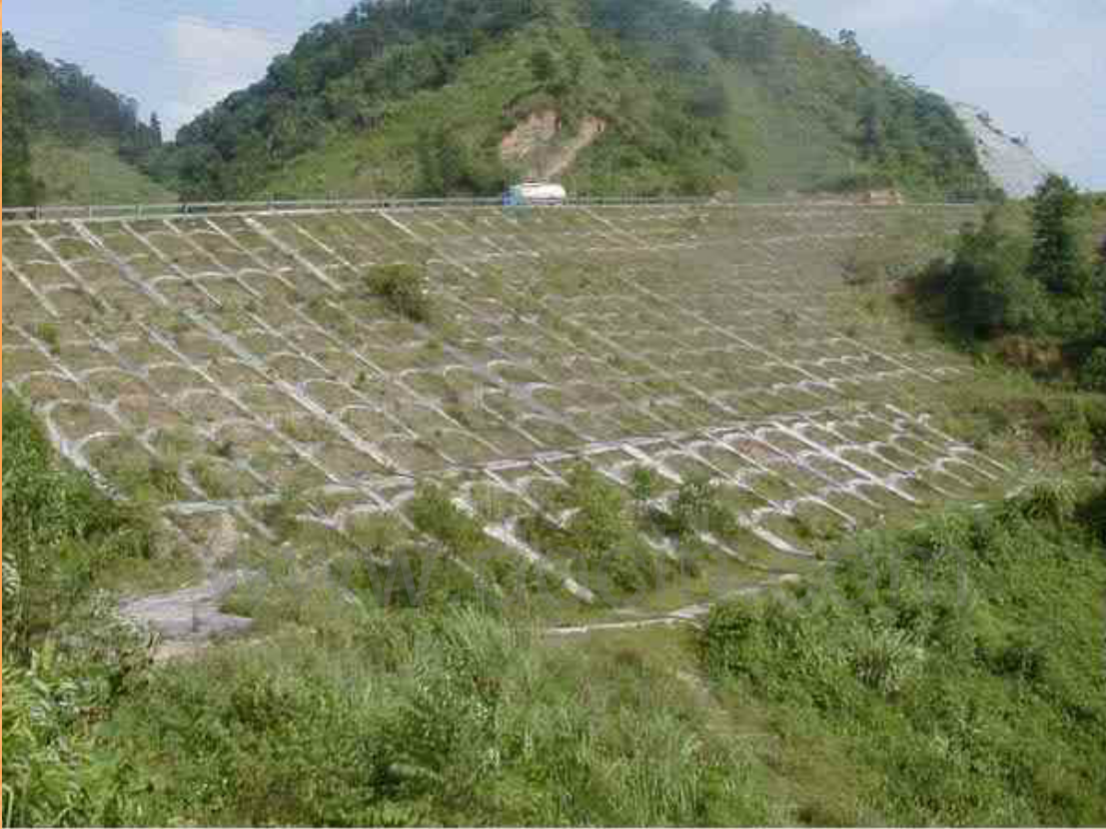
Slope Support and the Advantages of Self-Drilling Rock Bolts
Slope support refers to the measures taken to enhance the stability of slopes and prevent slope failures. Self-drilling rock bolts are a popular choice for slope stabilization due to their numerous advantages. These bolts can be easily installed in various types of soil and rock without the need for pre-drilling, reducing installation time and costs. Self-drilling rock bolts also provide immediate reinforcement and can effectively transfer loads to more stable zones. Additionally, they are corrosion-resistant and have a high load-bearing capacity, making them suitable for long-term slope stabilization.
.png)
Conclusion
Slope engineering plays a crucial role in ensuring the stability and safety of slopes. By understanding the classification of slopes, the basic forms of slope failure, and the factors affecting slope stability, engineers can implement effective measures for landslide control. Slope support methods, such as self-drilling rock bolts, offer advantages in terms of installation efficiency, load-bearing capacity, and long-term stability. By implementing proactive slope maintenance and utilizing appropriate engineering techniques, we can mitigate the risks associated with slopes and protect lives, infrastructure, and the environment.
latest news
-

- What Are the Applications of SDA Bolts in Hydropower Stations?
- Time:2025-08-21From:This Site
- Learn how self-drilling anchor bolts enhance slope stability, tunnel support, and dam reinforcement in complex geological conditions at hydropower stations. Optimize hydropower projects with efficient, cost-effective, and eco-friendly solutions.
- View details
-

- Slope Stabilization with SDA Bolts: Benefits & Applications
- Time:2025-08-19From:This Site
- Discover how self-drilling anchor bolts (SDA bolts) provide superior slope stabilization for highways, railways, and tunnels. Learn their key benefits, installation process, and real-world applications in loose or collapsible soils.
- View details
-

- How Self-Drilling Rock Bolts Enhance Tunnel Support in Fractured Rock?
- Time:2025-08-15From:This Site
- Discover how self-drilling rock bolts enhance tunnel support in fractured rock. Learn their benefits, installation steps, and real-world applications for safe, efficient tunneling.
- View details
-

- Sinorock 2025 Quality Month | Strengthening Quality Foundations, Empowering Product Excellence
- Time:2025-08-13From:This Site
- Sinorock’s 2025 Quality Month, themed “Strengthening Quality Foundations, Empowering Product Excellence,” successfully concluded, reinforcing our commitment to superior product quality.
- View details
-

- Sinorock Safety Month 2025 | Everyone Speaks Safety, Everyone Can Respond
- Time:2025-07-03From:This Site
- Sinorock Safety Month 2025, centered on the theme "Everyone Speaks Safety, Everyone Can Respond - Spot Workplace Hazards," has wrapped up successfully!
- View details
-

- Quality Control: the Vital Factor of A SDA Bolt Factory
- Time:2025-01-09From:This Site
- Sinorock’s comprehensive quality control system, from supplier management to outgoing inspections, ensuring the highest standards for self-drilling anchor bolts in construction.
- View details
-

- Sinorock Invites You to Explore Proven Self-Drilling Anchor Bolt Solutions at bauma 2025
- Time:2025-03-07From:This Site
- From April 7–13, 2025, explore Sinorock’s Self-drilling anchor bolt solution at Booth C2.513/4 in Hall C2 of the Messe München Exhibition Center (Munich, Germany).
- View details
-
.jpg)
- SINOROCK to Attend EXPOMINA PERÚ 2024 in Lima, Peru
- Time:2024-08-10From:This Site
- Sinorock to Attend EXPOMINA PERÚ 2024 in Lima, Peru
- View details
-
.jpg)
- SINOROCK to Participate in MINING AND METALS CENTRAL ASIA 2024
- Time:2024-08-08From:This Site
- SINOROCK to Participate in MINING AND METALS CENTRAL ASIA 2024
- View details
 Download
Download 


